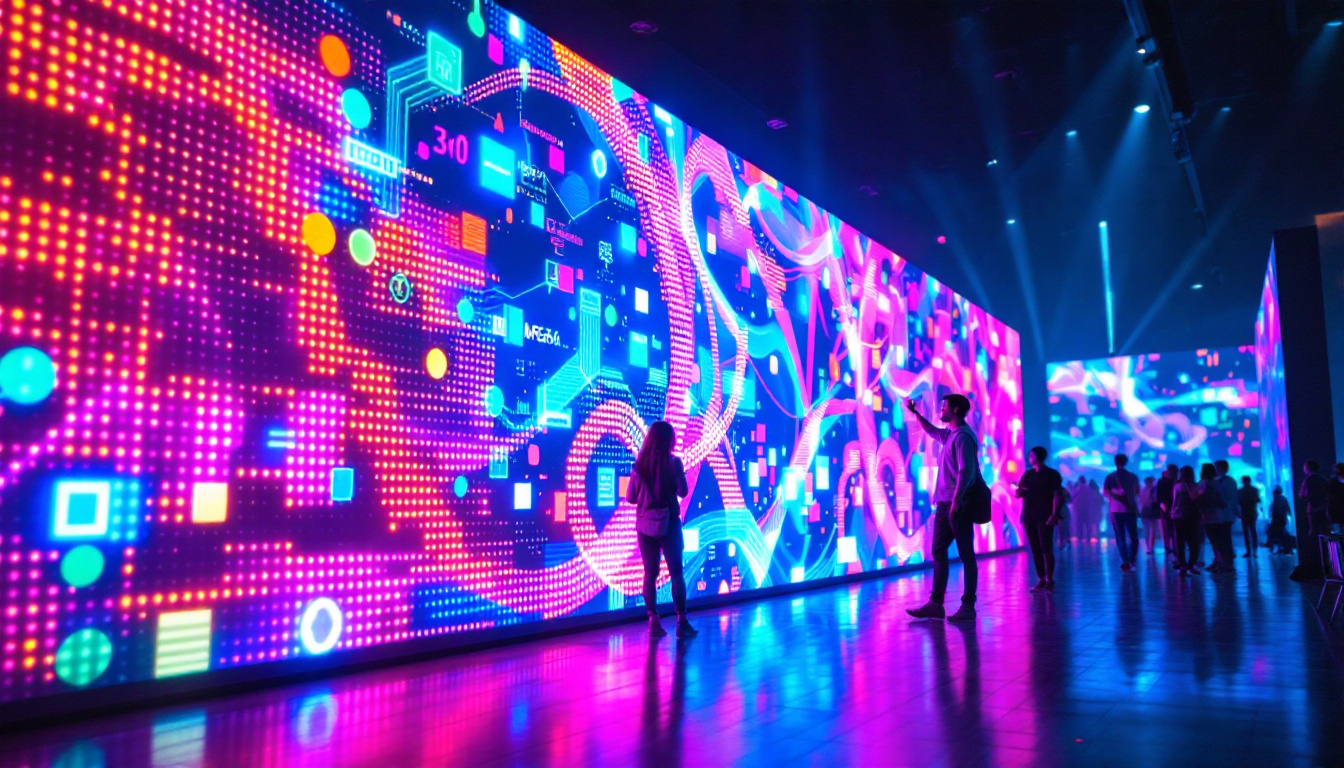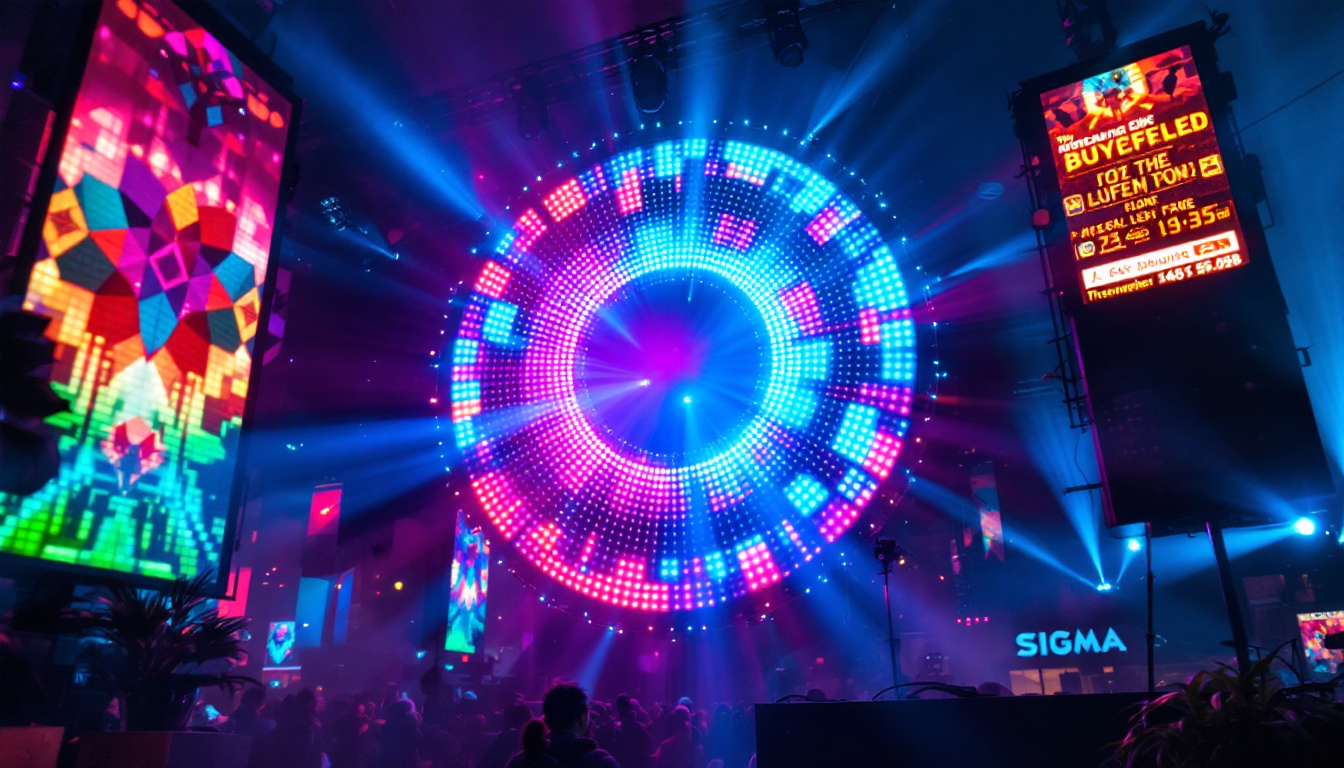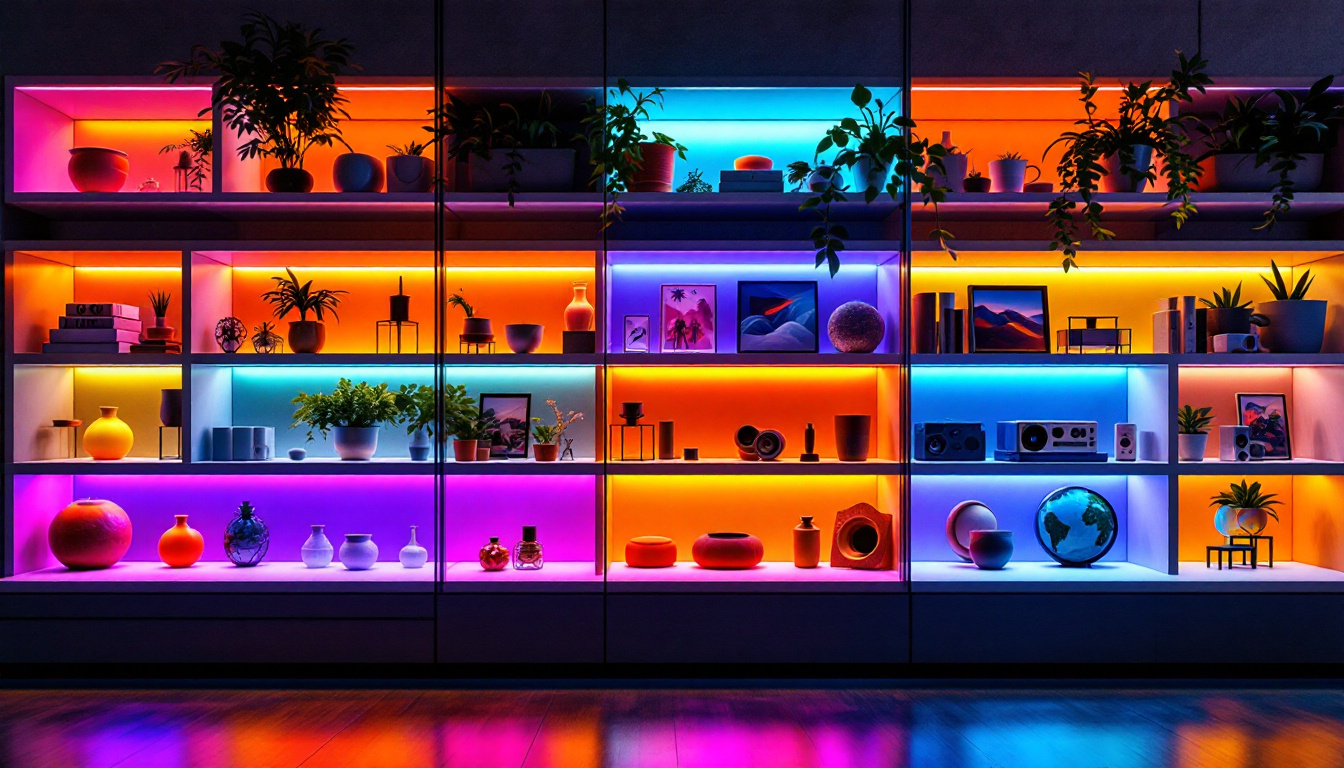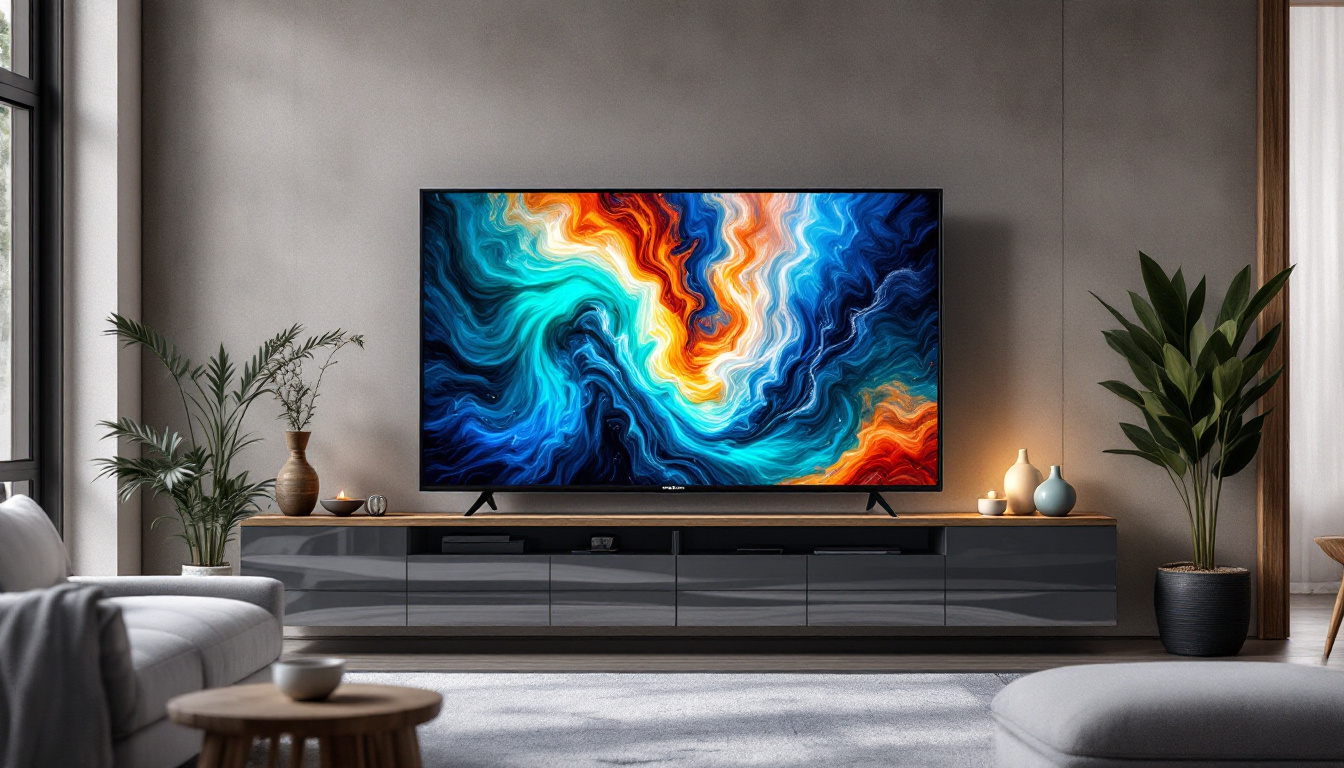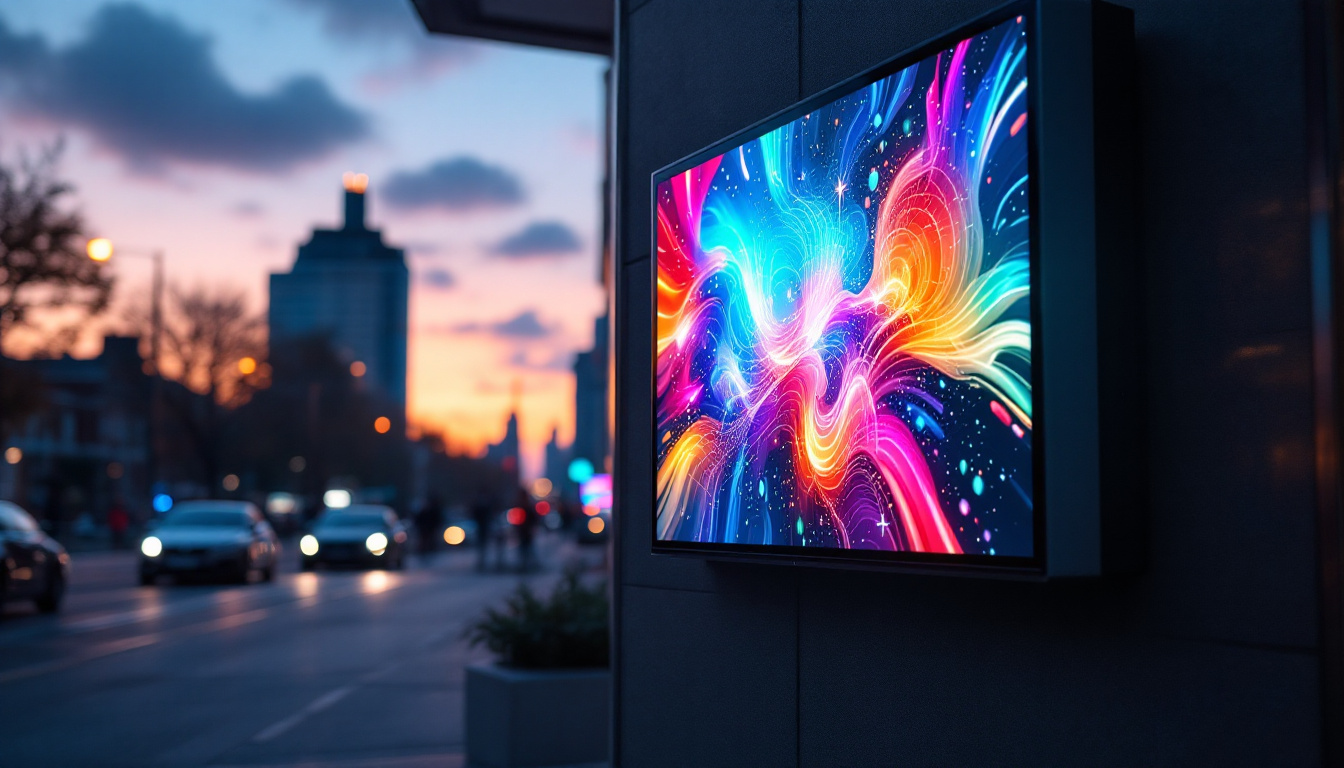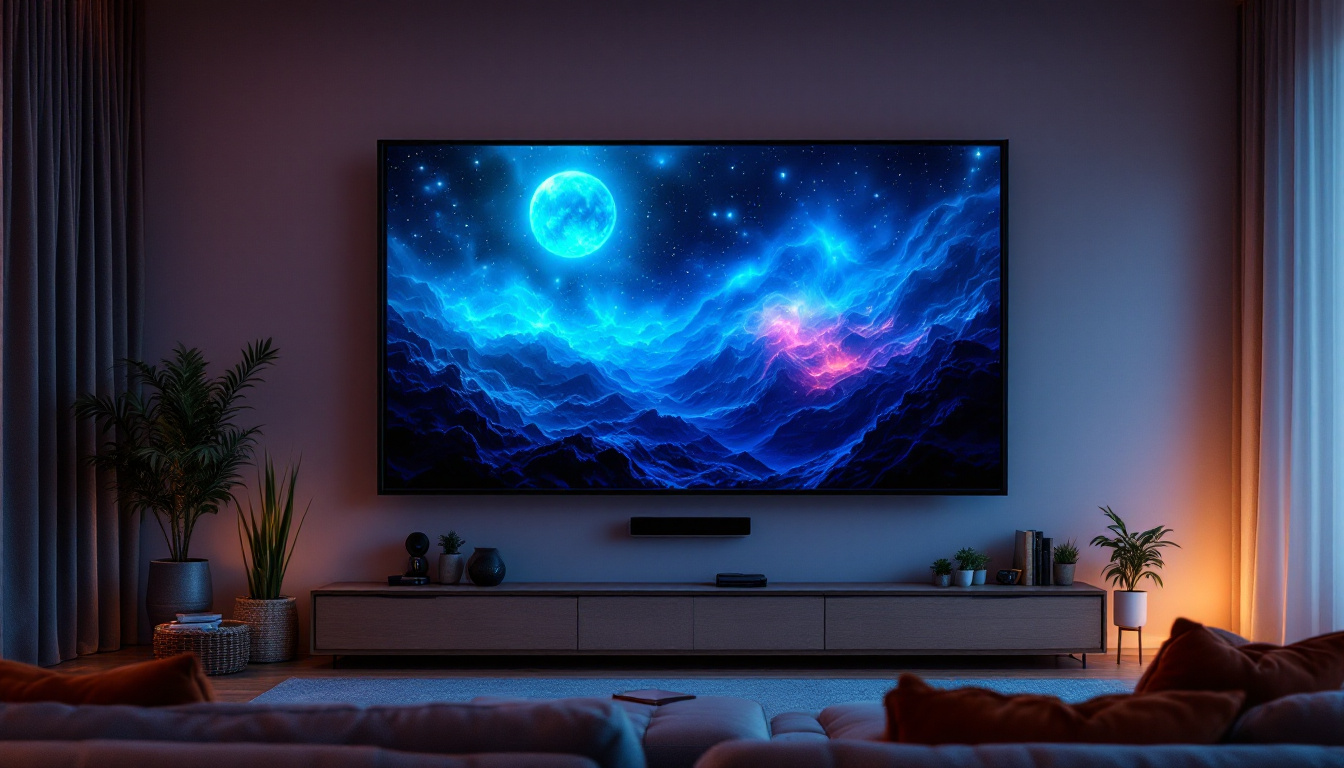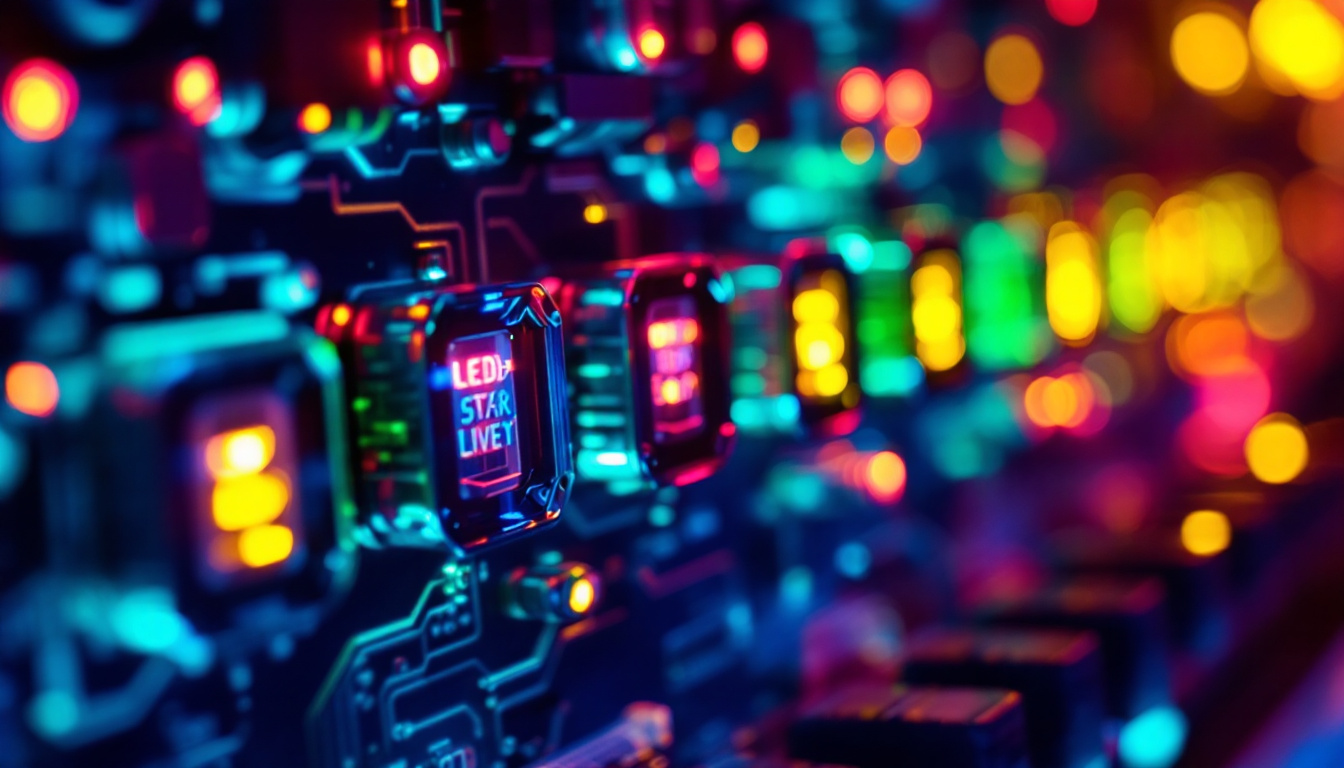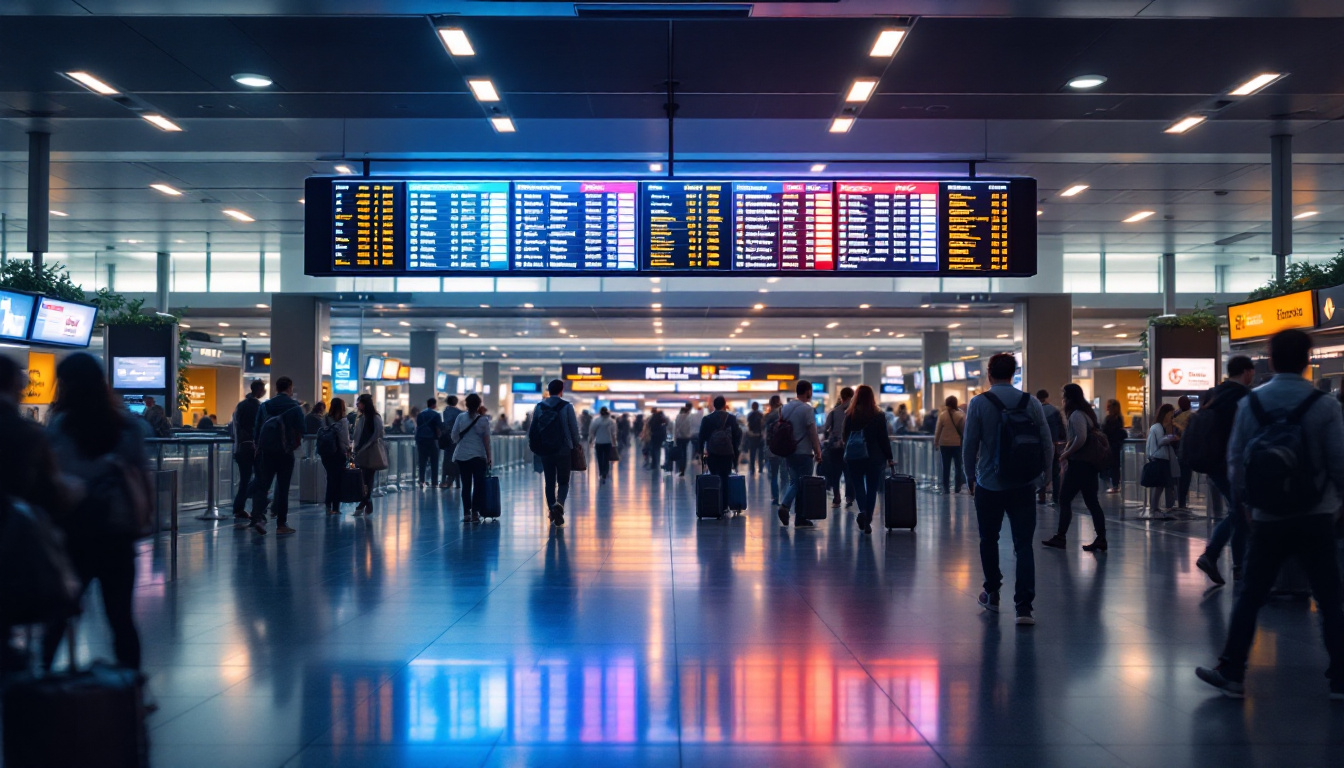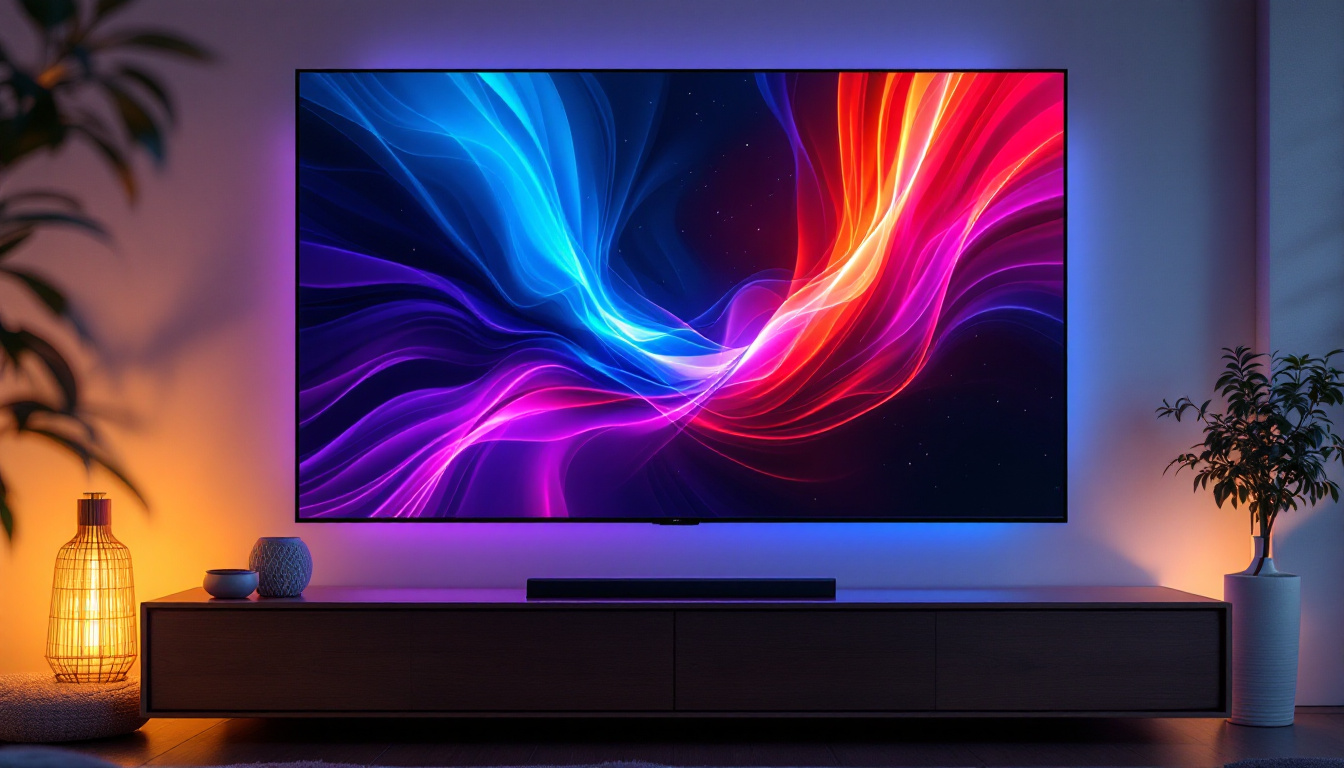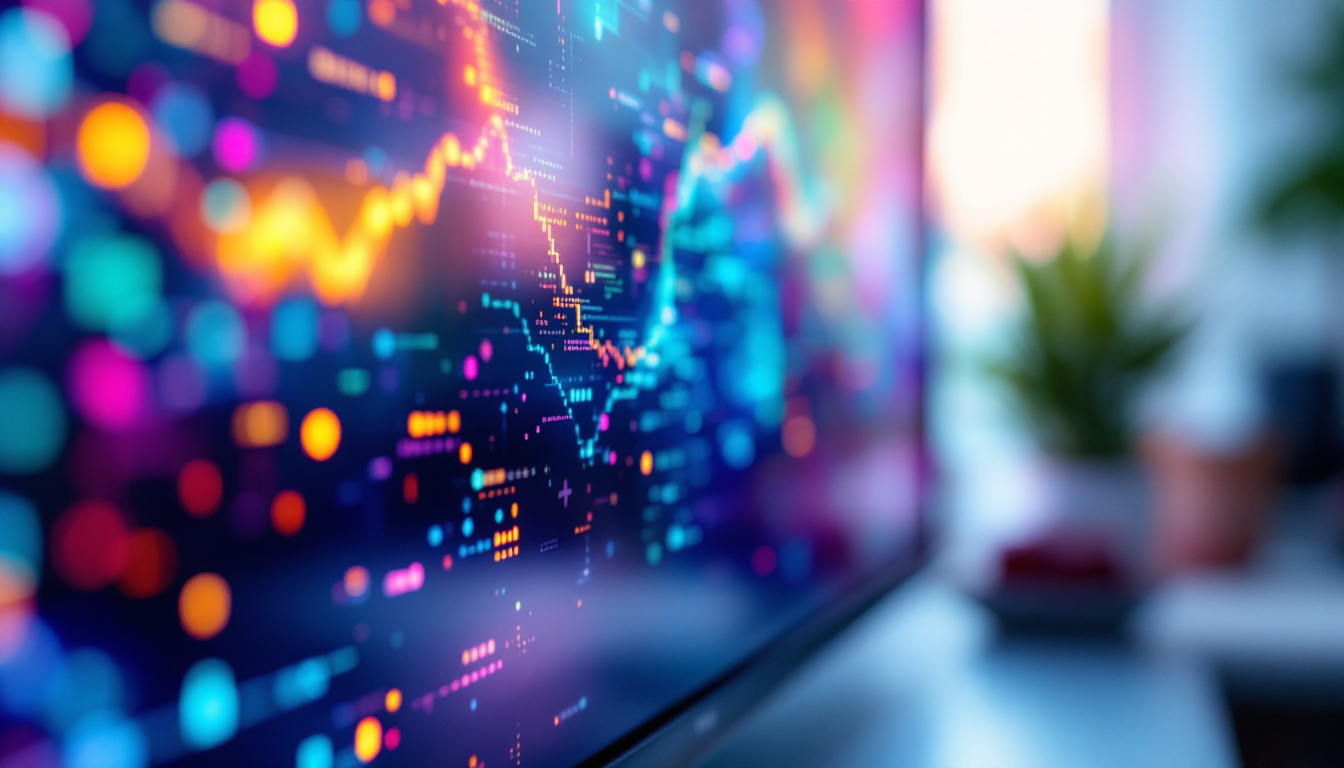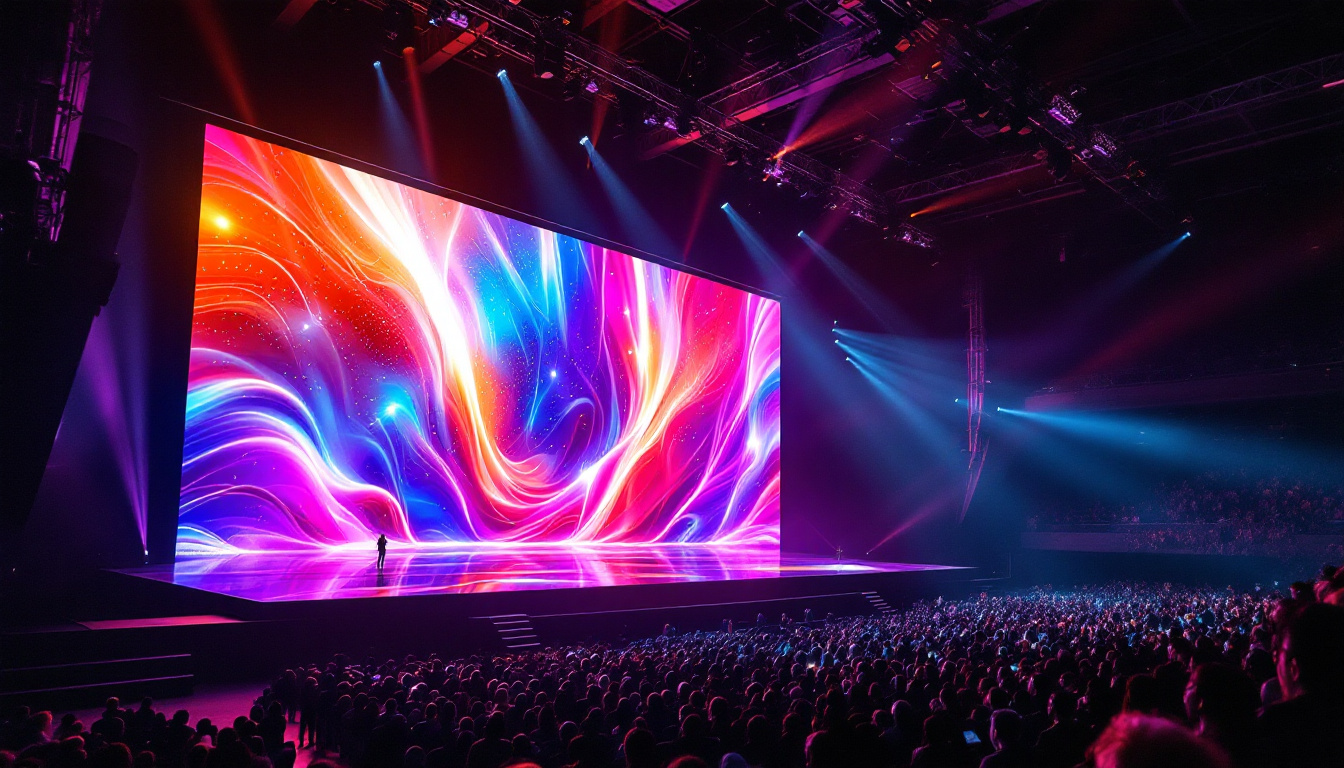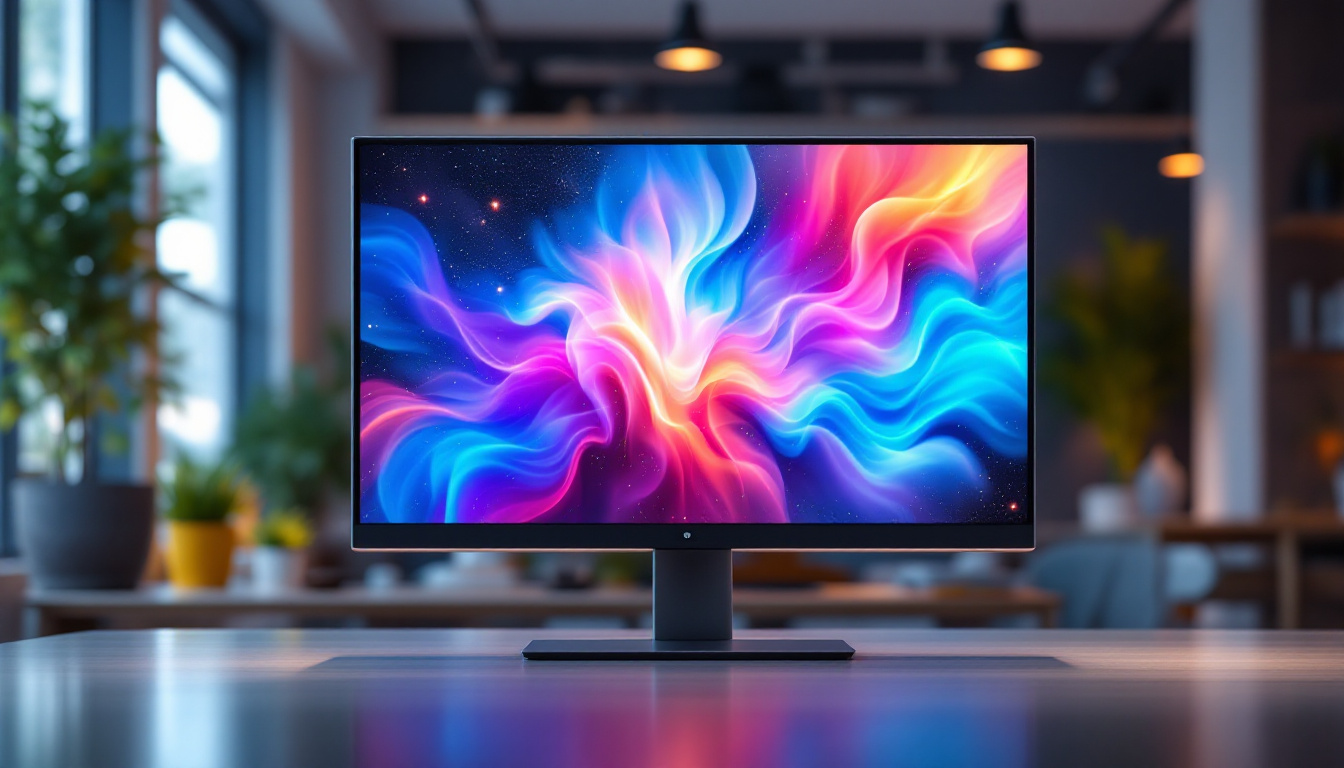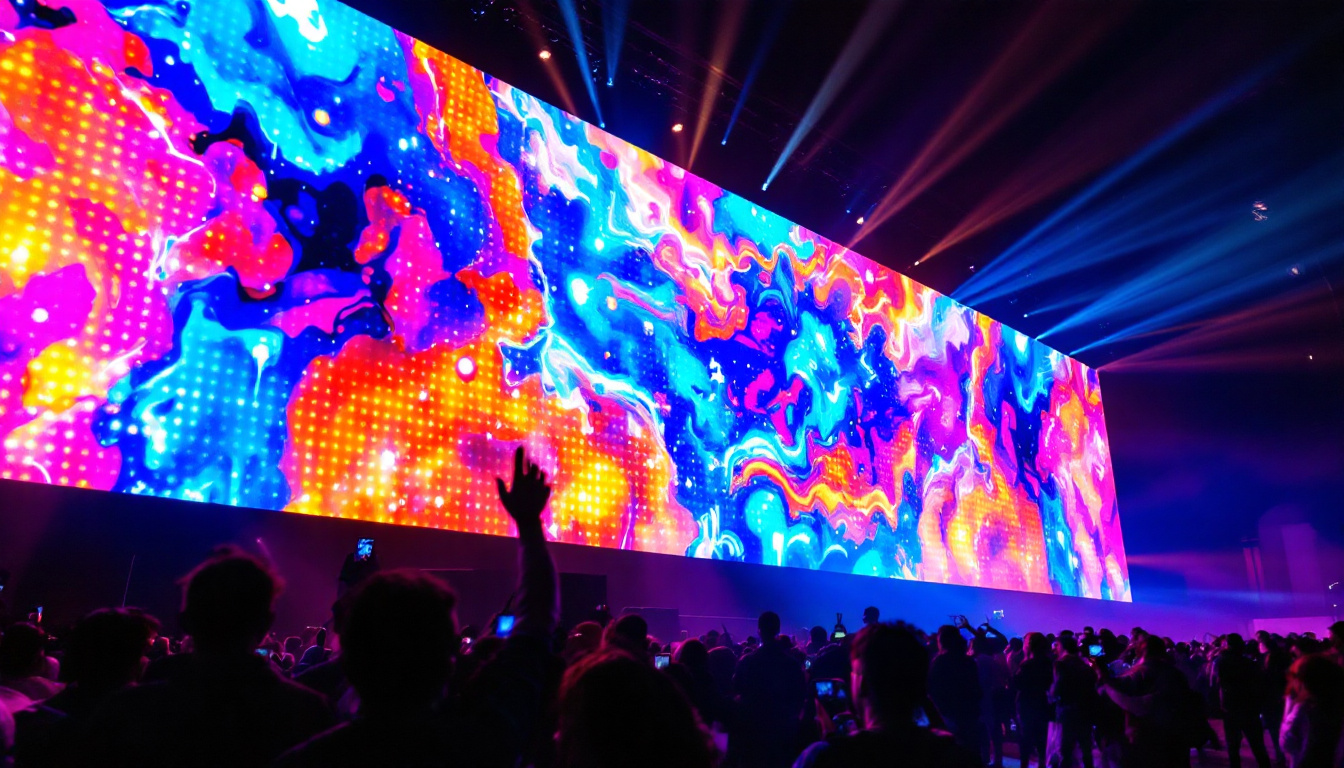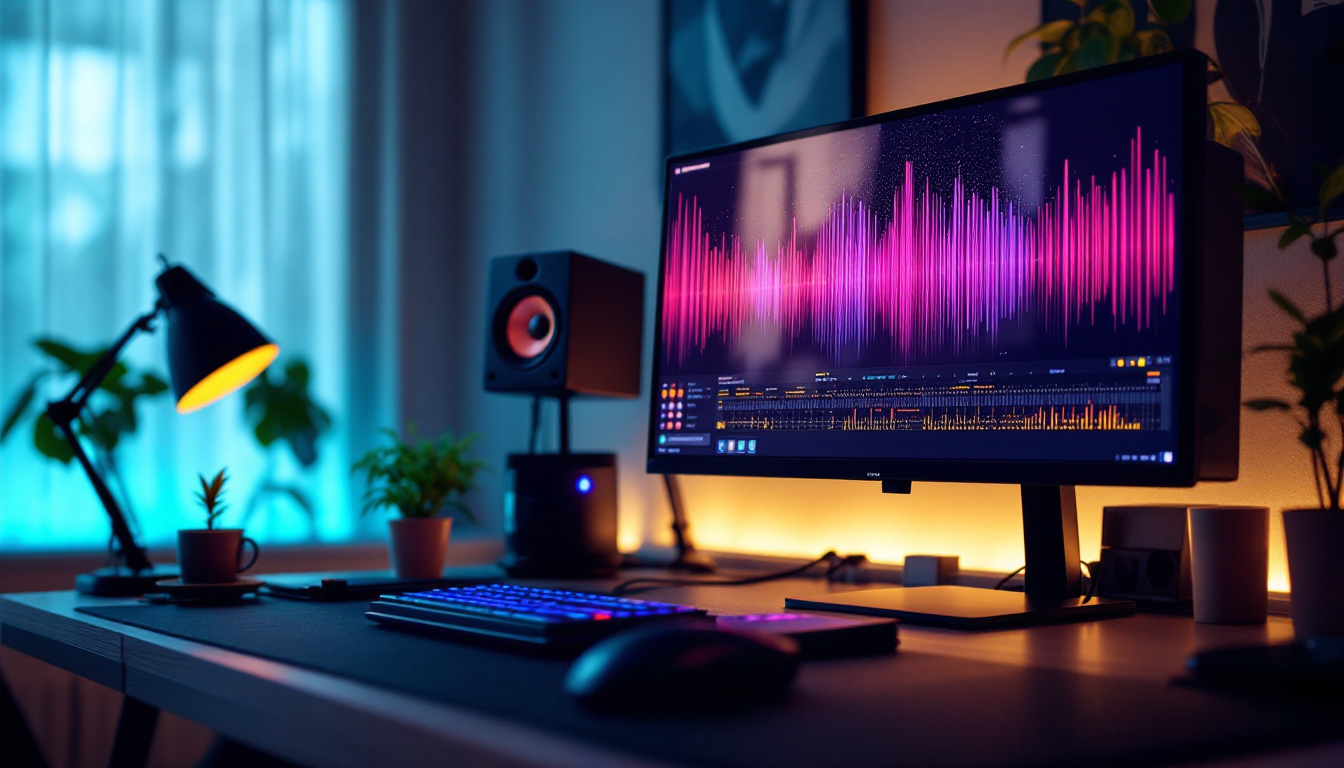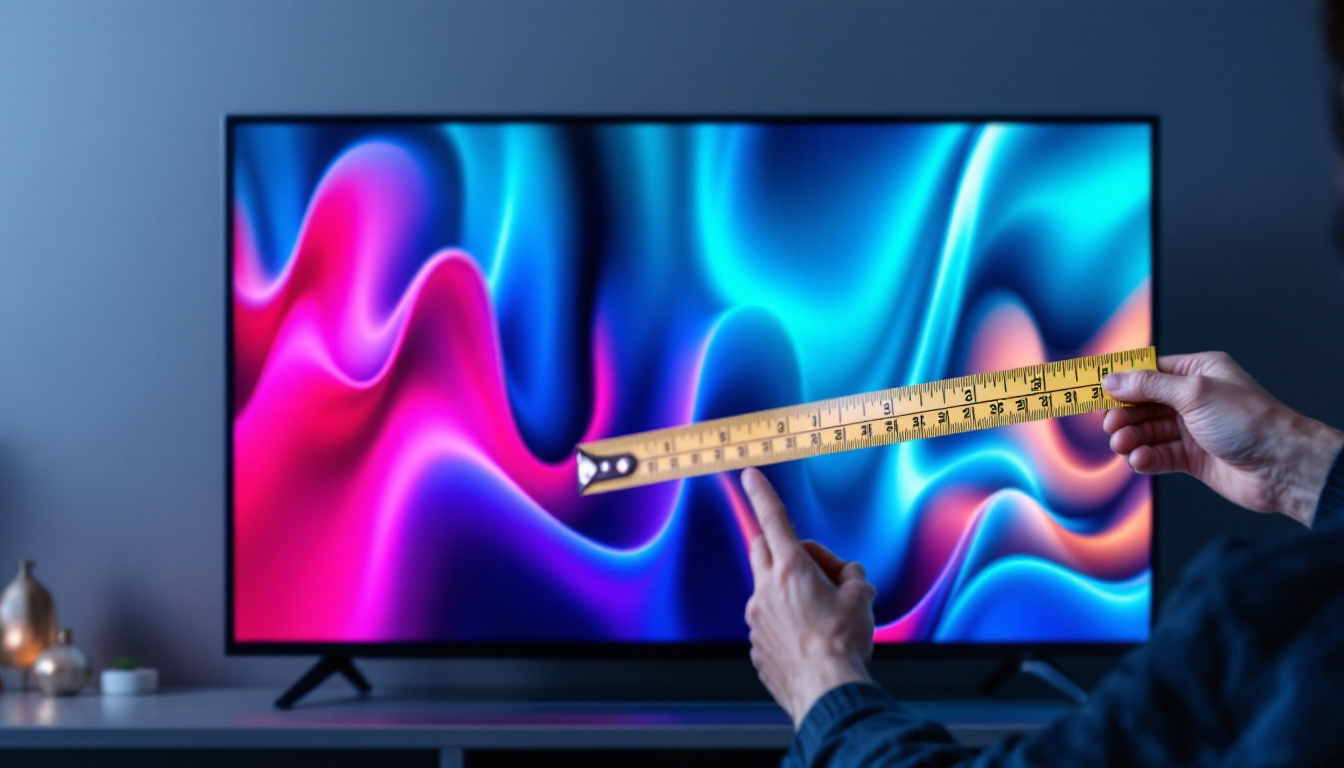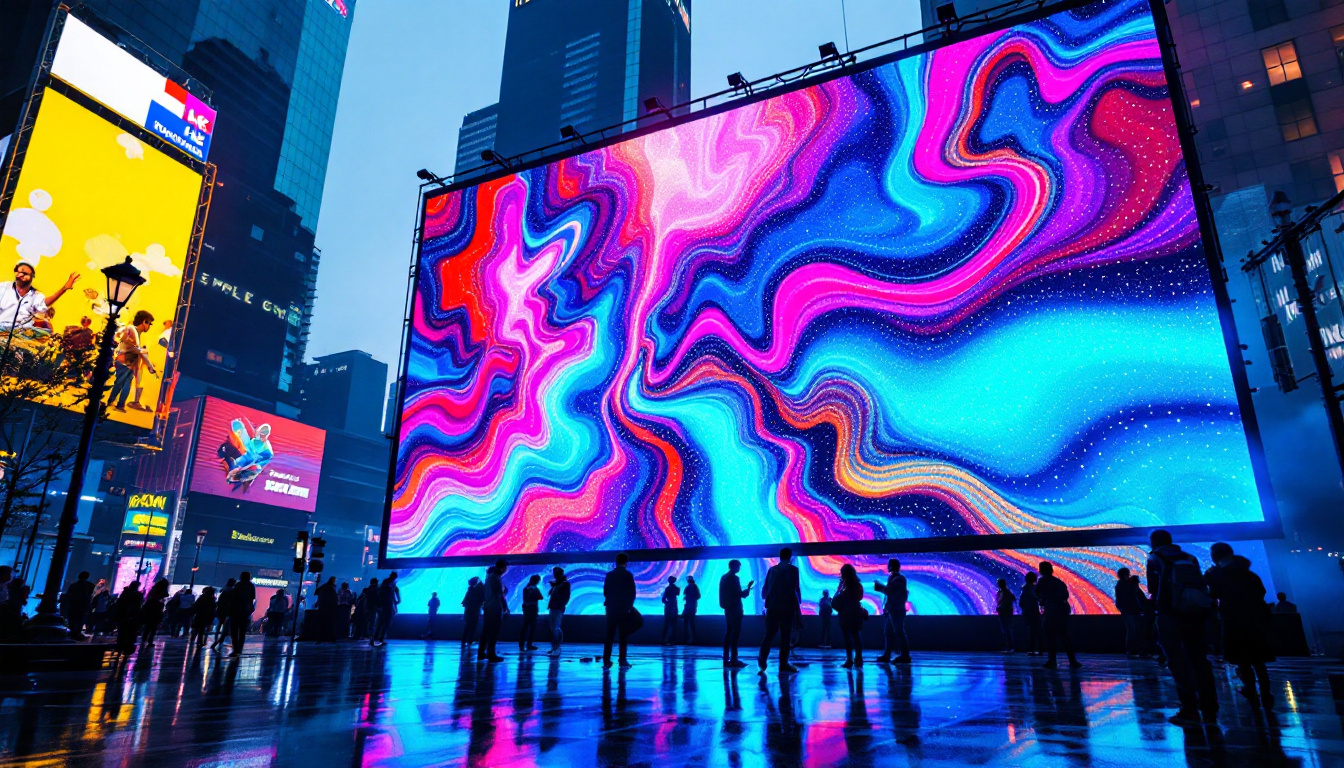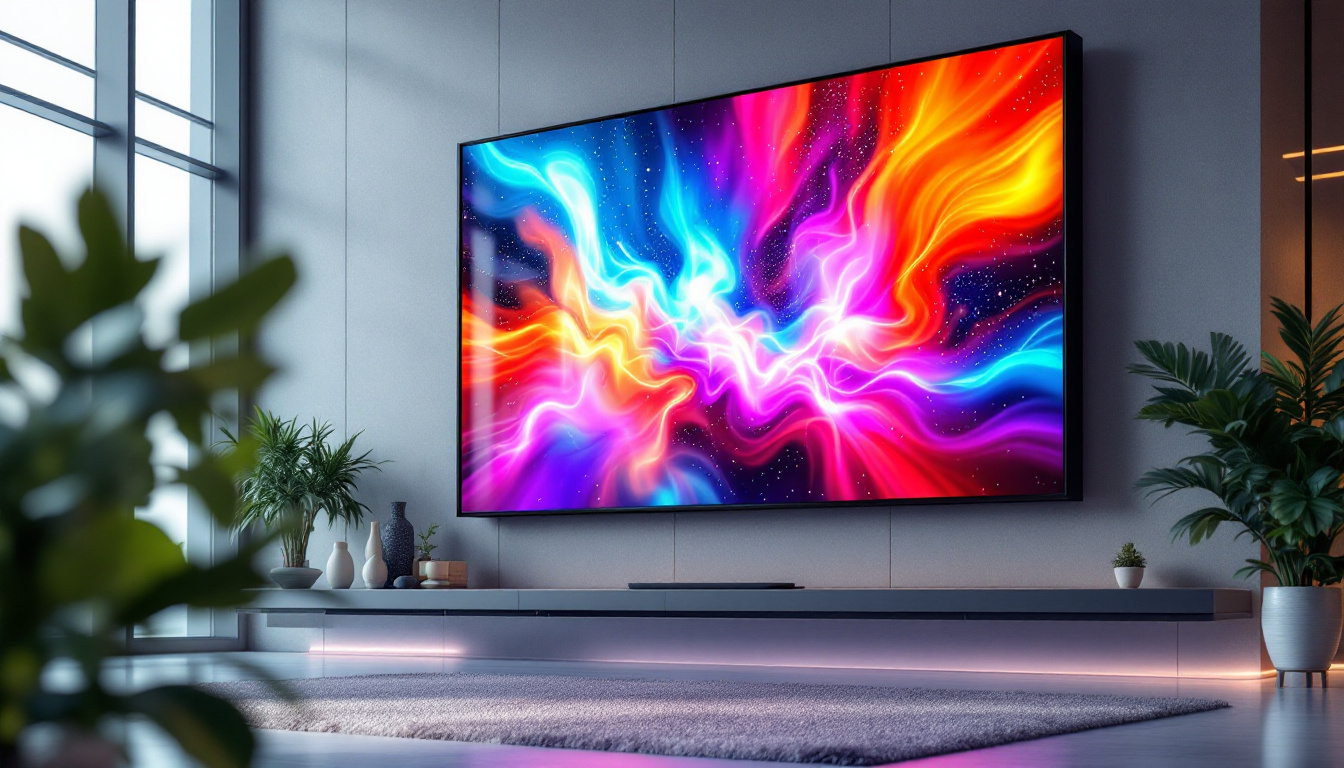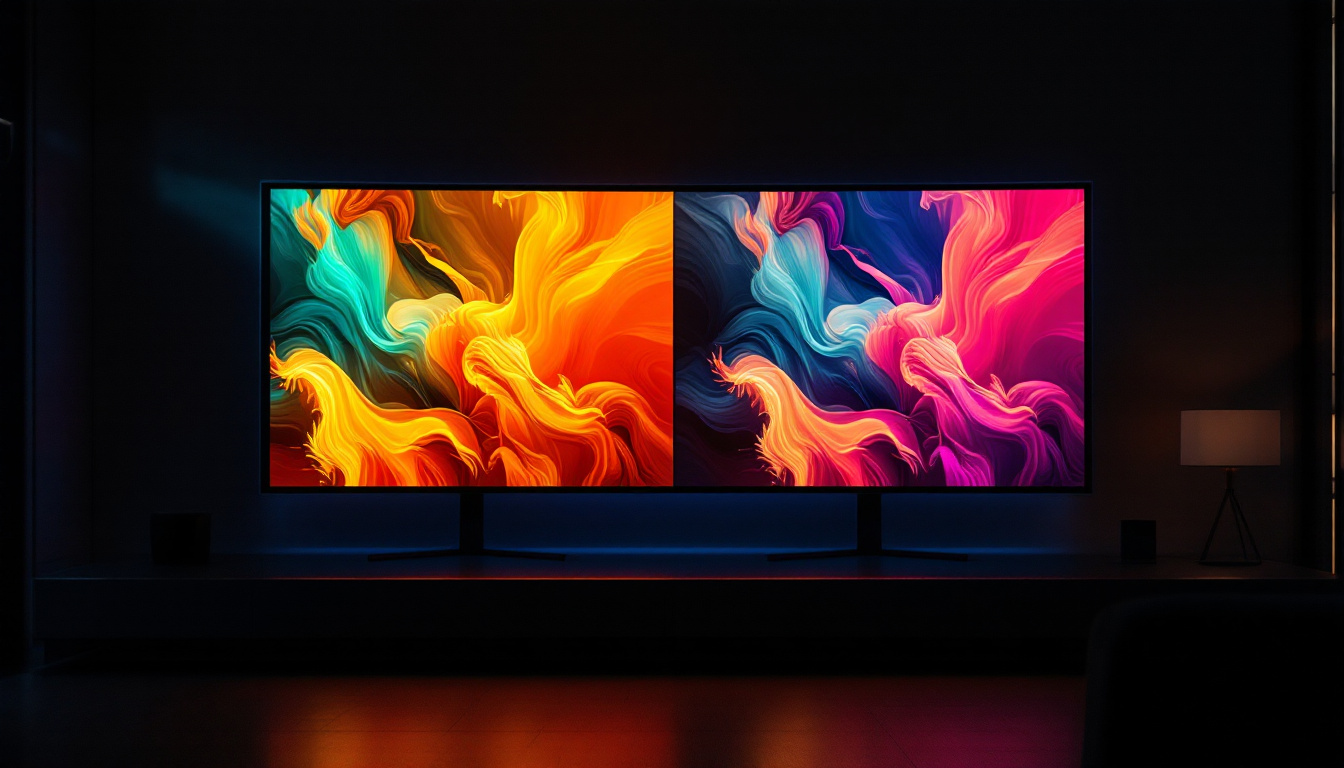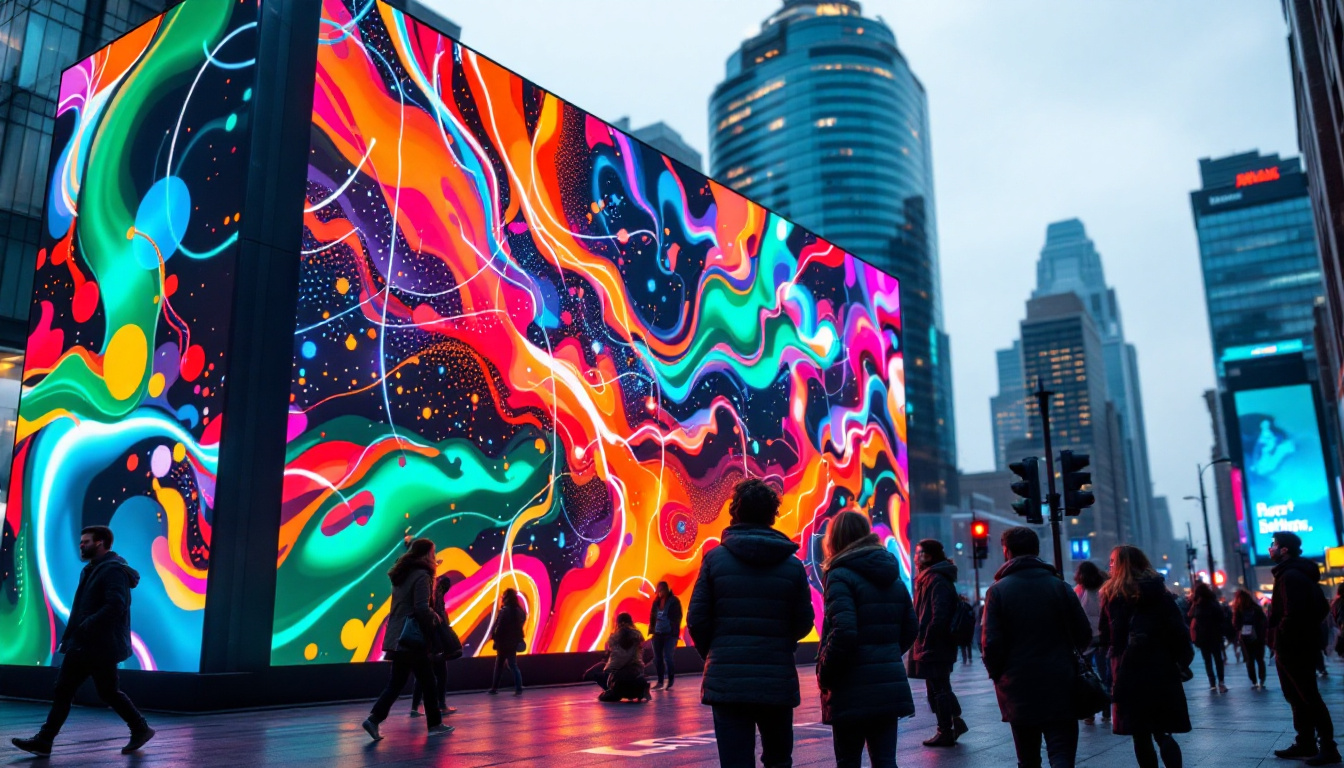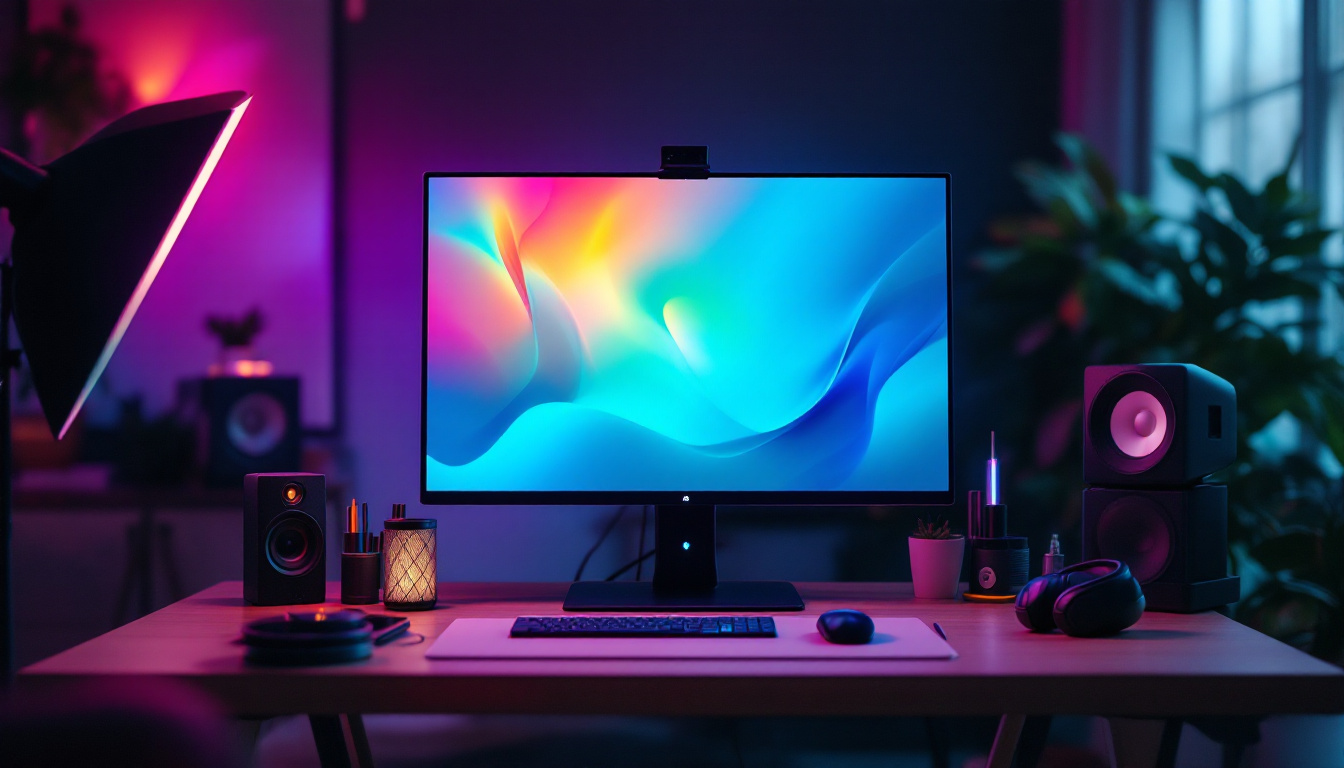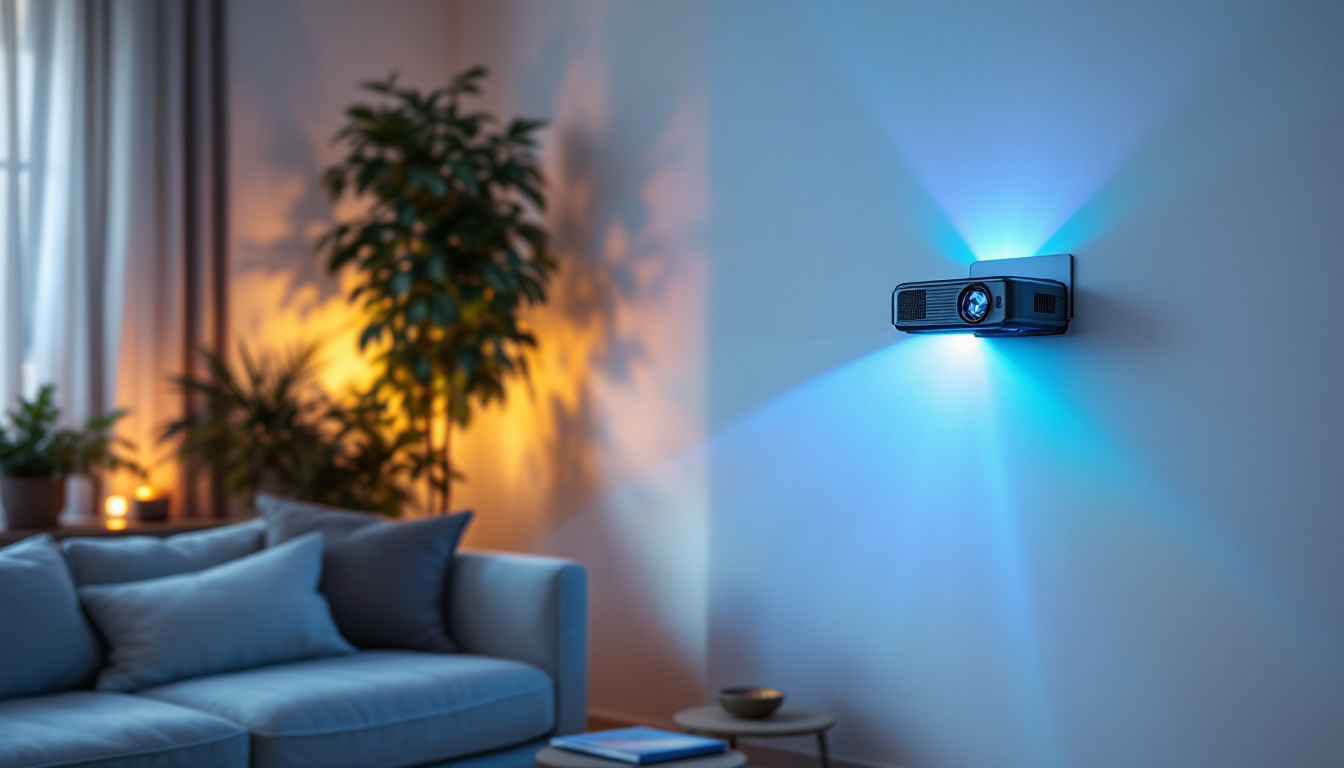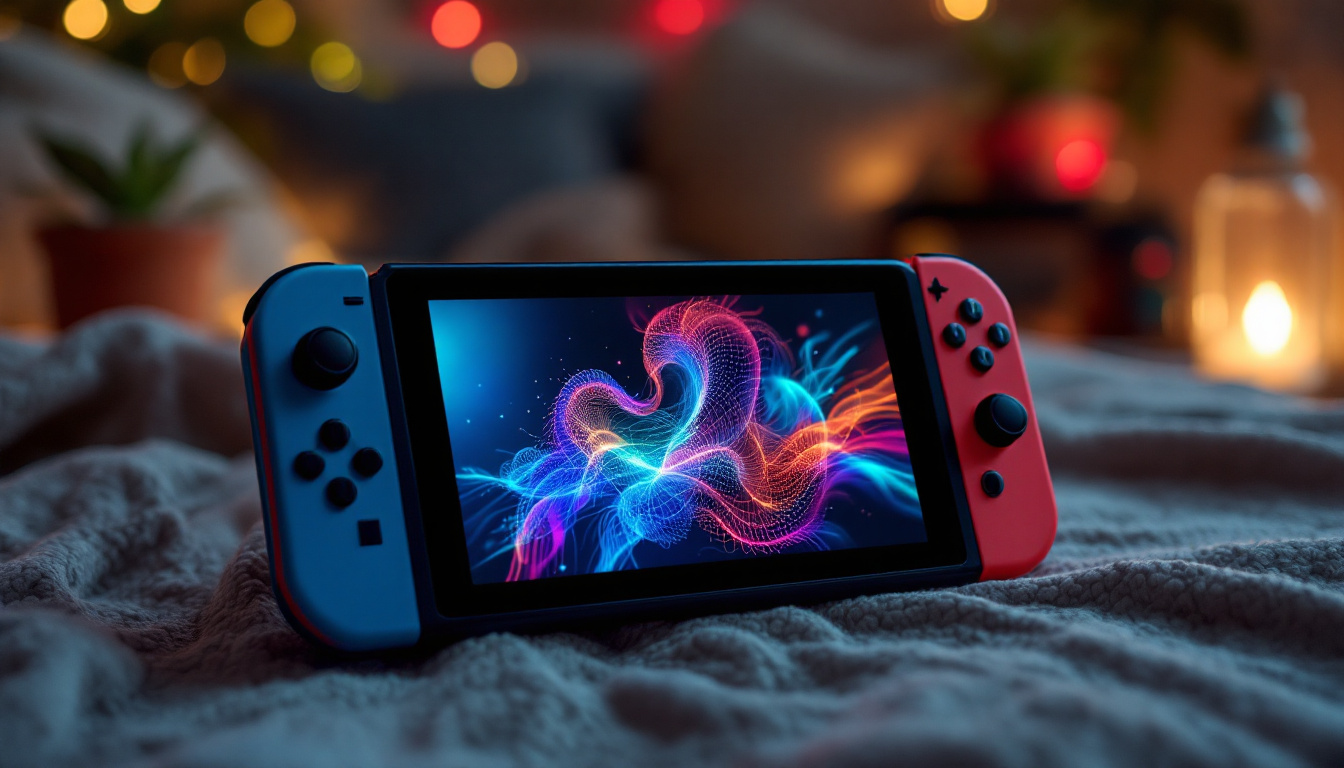The film industry has witnessed a remarkable transformation in recent years, particularly with the advent of innovative technologies that enhance storytelling and visual experiences. One such groundbreaking development is the use of LED displays in volume filming. This technique has revolutionized the way filmmakers create immersive environments, allowing for greater creative freedom and efficiency. This article delves into the intricacies of volume filming and the role of LED displays in this modern filmmaking approach.
Understanding Volume Filming
Volume filming is a technique that utilizes large LED screens to create dynamic backgrounds for live-action scenes. Unlike traditional green screens, which require extensive post-production work to add backgrounds, volume filming enables real-time rendering of environments, providing actors with a more authentic setting. This method not only enhances the visual quality of the film but also improves the overall performance of the actors. By immersing performers in a visually rich environment, they can react more naturally to their surroundings, leading to a more genuine portrayal of their characters.
The Concept of Virtual Production
At the heart of volume filming is the concept of virtual production. This approach integrates live-action footage with computer-generated imagery (CGI) in real-time. By using advanced motion capture technology and 3D rendering, filmmakers can create interactive environments that respond to the movements of the camera and actors. This interaction allows for a seamless blend of reality and digital elements, resulting in a more immersive viewing experience. The ability to visualize complex scenes in real-time also empowers directors to make creative decisions on the fly, adjusting elements as needed to achieve the desired aesthetic.
Virtual production has gained traction in recent years, particularly with the success of high-profile projects like “The Mandalorian.” By leveraging LED displays, filmmakers can transport their audiences to distant worlds without the need for extensive location shoots or elaborate set designs. This not only saves time and resources but also opens up new creative possibilities. The technology allows for the creation of environments that would be impossible or prohibitively expensive to build physically, such as alien landscapes or fantastical realms, thus expanding the horizons of storytelling in cinema.
Benefits of Using LED Displays
LED displays offer several advantages over traditional filming techniques. One of the most significant benefits is the ability to create realistic lighting effects. The LED screens can emit light that interacts with the actors and props, providing a more natural look that is difficult to achieve with green screens. This dynamic lighting helps to ground the performance in the environment, enhancing the believability of the scene. Furthermore, the screens can be programmed to mimic various lighting scenarios, such as flickering flames or the soft glow of moonlight, which adds layers of depth to the visual narrative.
Moreover, LED displays can be easily adjusted to reflect different times of day or weather conditions, allowing for greater flexibility during filming. This adaptability means that filmmakers can experiment with various visual styles without the logistical challenges associated with location changes. The versatility of LED technology also allows for rapid changes between scenes, enabling a more fluid shooting schedule and reducing the downtime typically associated with traditional set transitions.
Challenges and Considerations
Despite the numerous advantages, volume filming with LED displays is not without its challenges. One of the primary concerns is the cost associated with setting up such sophisticated technology. High-quality LED panels can be expensive, and the initial investment may be a barrier for smaller productions. Additionally, the ongoing maintenance and potential need for upgrades can strain budgets, particularly for independent filmmakers who may not have access to the same financial resources as larger studios.
Additionally, the technical expertise required to operate and maintain the equipment can pose a challenge. Filmmakers must ensure that their crew is well-trained in the nuances of virtual production and familiar with the software used to create and manipulate the digital environments. This requirement for specialized knowledge can lead to a steeper learning curve, necessitating investment in training programs or hiring experienced professionals. Moreover, as the technology continues to evolve, staying updated with the latest advancements becomes crucial for filmmakers aiming to harness the full potential of volume filming.
The Technology Behind LED Displays
To fully appreciate the impact of LED displays in volume filming, it is essential to understand the technology that powers them. LED, or light-emitting diode, displays are composed of numerous tiny lights that work together to produce vibrant images. The resolution and quality of these displays play a crucial role in the overall effectiveness of volume filming.
Resolution and Pixel Density
The resolution of an LED display is measured in pixels, and higher pixel density results in sharper, more detailed images. For volume filming, it is crucial to choose displays with high resolution to ensure that the backgrounds appear realistic and immersive. This is particularly important when filming close-up shots, where any pixelation or blurriness can detract from the viewer’s experience.
In addition to resolution, the size of the LED panels also matters. Larger screens can create a more enveloping environment, allowing actors to interact more naturally with their surroundings. The arrangement of these panels can be customized to fit the specific needs of a production, creating a versatile space for filming.
Real-Time Rendering and Software Integration
Real-time rendering is a key component of volume filming. This technology allows filmmakers to see the final visual output as they shoot, rather than waiting for post-production to see how the scenes will look. Advanced software platforms, such as Unreal Engine, enable filmmakers to create and manipulate 3D environments on the fly, making it possible to adjust lighting, textures, and other elements in real-time.
The integration of software with LED displays also facilitates the use of motion capture technology. By tracking the movements of the camera and actors, the software can adjust the background accordingly, ensuring that the perspective remains consistent throughout the scene. This level of precision is what sets volume filming apart from traditional methods.
Applications of Volume Filming in the Industry
Volume filming has found applications across various genres and formats, from feature films to television series and even live events. Its versatility makes it an attractive option for filmmakers looking to push the boundaries of visual storytelling.
Feature Films and Television Series
One of the most notable examples of volume filming in feature films is “The Mandalorian,” which utilized this technology to create the expansive worlds of the Star Wars universe. The series showcased how LED displays could be used to craft intricate environments that would have been challenging to achieve through traditional means. The success of this approach has inspired other filmmakers to explore volume filming for their projects.
Television series have also embraced this technique, with many productions opting for LED displays to create immersive settings. The ability to quickly change backgrounds and adapt to different scenes has proven invaluable for episodic storytelling, where time and budget constraints are often a concern.
Live Events and Virtual Experiences
Beyond scripted content, volume filming has found a place in live events and virtual experiences. Concerts, corporate events, and immersive exhibitions can benefit from the dynamic visuals provided by LED displays. This technology allows for stunning backdrops that can enhance performances and engage audiences in new ways.
For instance, live concerts can incorporate LED screens to create a captivating atmosphere that complements the music. The ability to change visuals in real-time allows for a more interactive experience, drawing audiences into the performance.
The Future of Volume Filming
As technology continues to evolve, the future of volume filming looks promising. Advancements in LED display technology, software capabilities, and motion capture techniques are likely to further enhance the filmmaking process. This evolution will not only improve the quality of visual storytelling but also make it more accessible to a broader range of filmmakers.
Emerging Technologies
Emerging technologies, such as artificial intelligence and machine learning, are poised to play a significant role in the future of volume filming. These advancements could streamline the process of creating and manipulating digital environments, allowing filmmakers to focus more on creativity rather than technical challenges.
Additionally, as the cost of LED displays continues to decrease, smaller productions may find it more feasible to incorporate volume filming into their projects. This democratization of technology could lead to a new wave of innovative storytelling that pushes the boundaries of traditional filmmaking.
Expanding Creative Possibilities
The integration of volume filming into the filmmaking landscape opens up a world of creative possibilities. Filmmakers can experiment with different styles, genres, and narratives without the constraints of physical sets or location shooting. This flexibility encourages innovation and collaboration, fostering a vibrant creative community.
As more filmmakers adopt volume filming techniques, audiences can expect to see a diverse array of visually stunning content that challenges conventional storytelling methods. The potential for immersive experiences will continue to grow, captivating viewers and redefining the cinematic landscape.
Conclusion
Volume filming, powered by LED displays, represents a significant leap forward in the filmmaking process. By combining live-action footage with real-time CGI, filmmakers can create immersive environments that enhance storytelling and elevate the viewer’s experience. While challenges remain, the benefits of this technology are undeniable, and its applications are expanding across various genres and formats.
As the industry continues to embrace volume filming, the future looks bright for filmmakers and audiences alike. The evolution of this technology promises to reshape the way stories are told, offering new opportunities for creativity and innovation. As filmmakers harness the power of LED displays, the possibilities for captivating visual narratives are limitless.
Discover the Future of Filmmaking with LumenMatrix
Ready to take your visual storytelling to the next level? LumenMatrix is at the forefront of LED display innovation, offering a wide range of solutions that bring your creative visions to life. From Indoor and Outdoor LED Wall Displays to specialized options like Vehicle, Sports, and Floor LED Displays, our technology is designed to captivate and engage. Embrace the future of filmmaking with our Custom, All-in-One, and Transparent LED Displays, and see how our commitment to revolutionizing visual communication can transform your next project. Check out LumenMatrix LED Display Solutions today and join the revolution in immersive storytelling.


